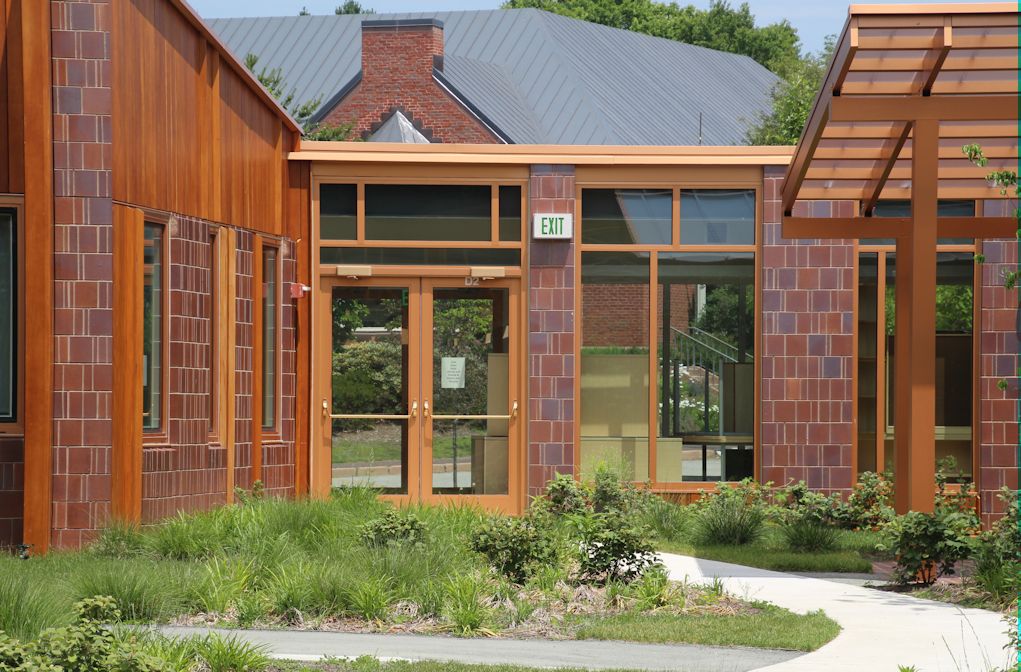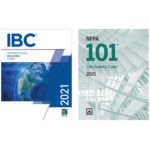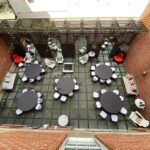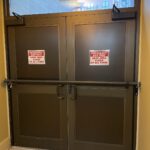In today’s post on iDigHardware, Mark Kuhn addresses a recent code change that allows enclosed courtyards and other exterior spaces to be secured when they are not occupied. But how do these requirements affect the doors serving these spaces when there is an access control system?
~~~
 In an earlier post I mentioned that one reason for a code change may be to clarify the intent of a code requirement. This week I ran across a good candidate for such a change.
In an earlier post I mentioned that one reason for a code change may be to clarify the intent of a code requirement. This week I ran across a good candidate for such a change.
In the 2021 edition of the International Building Code (IBC) a change addressed the need to secure enclosed courtyards. Prior to this edition, when a building had an enclosed courtyard, the means of egress was required to allow building occupants to exit from the courtyard by going through the building. As you can imagine, this was not very popular with building owners who wanted to keep their buildings secure from folks with ladders or the superpowers of Spiderman.
Because of this building security issue, a new section was included in the 2021 IBC to address the means of locking doors serving courtyards, roof terraces, and other exterior spaces where the egress path passed through the interior of the building.
As you can imagine, the IBC includes prescriptive criteria for locking these doors. In IBC-2021 – Section 1010.2.4, Item 8, there is a very detailed list of criteria and the various conditions that must be met:
8. Other than egress courts where occupants must egress from an exterior space through the building for means of egress, exit access doors shall be permitted to be equipped with an approved locking device where installed and operated in accordance with all of the following:
8.1. The maximum occupant load shall be posted where required by Section 1004.9. Such signage shall be permanently affixed inside the building and shall be posted in a conspicuous space near all the exit access doorways.
8.2. A weatherproof telephone or two-way communication system installed in accordance with Sections 1009.8.1 and 1009.8.2 shall be located adjacent to not less than one required exit access door on the exterior side.
8.3. The egress door locking device is readily distinguishable as locked and shall be a key-operated locking device.
8.4. A clear window or glazed door opening, not less than 5 square feet (0.46 m2) in area, shall be provided at each exit access door to determine if there are occupants using the outdoor area.
8.5. A readily visible, durable sign shall be posted on the interior side on or adjacent to each locked required exit access door serving the exterior area stating, “THIS DOOR TO REMAIN UNLOCKED WHEN THE OUT- DOOR AREA IS OCCUPIED.” The letters on the sign shall be not less than 1 inch (25.4 mm) high on a contrasting background.
8.6. The occupant load of the occupied exterior area shall not exceed 300 occupants in accordance with Section 1004.
This week I spoke with a building owner who wanted to secure an enclosed courtyard with electrified hardware. We were locking the door with a maglock and controlling the maglock with a key switch that had “lock” and “unlock” indicator LEDs. When I looked over the list of criteria in the IBC, I didn’t really see anything that would prohibit this, assuming that all the other criteria were met (signage, telephone, window size and occupant load).
This application seems to meet the code requirements, right? At least I thought so, until the owner mentioned that the reason he wanted to secure the courtyard electronically was because they could then lock and unlock the courtyard remotely at certain times of the day. When they mentioned this, I thought to myself…this could really be a “hole” in the code. I could just picture someone having a late lunch in the courtyard and the access control system automatically locking the door at the scheduled time.
As mentioned in Item 8.4 above, the IBC requires a large window, not less than 5 square feet, to allow someone to check and see if the exterior space is empty of people before locking the door. This is why I believe there could be future improvements to this section of the code. If you can fulfill all the criteria included in the code and still see pitfalls, there probably needs to be some clarification.
Don’t get me wrong, as I stated at the beginning of my article, 2021 was the IBC’s first attempt at securing courtyards and other exterior spaces, and sometimes the initial code language needs a few tweaks.
What do you think? Agree? Disagree? Do you have other ideas for improvements to this section?
You need to login or register to bookmark/favorite this content.









It will have to wait until the 2030 edition of the IBC. Changes to Chapter 10 were due 01/08/2024. The Committee Action Hearing was held last week.
I have an issue with the Remote Locking and Unlocking of the Courtyard.
I am in belief that he should be able to remotely lock access to the courtyard, but must allow free egress from the courtyard.
This means there will need to be hardware installed in the courtyard that will allow someone to walk up to the door and in one motion exit from the courtyard.
There should also be a Fire Alarm Pull Station Mounted near all egress doors, that will also allow the release of all doors from the courtyard.
We are dealing with a Major Way Mag-Locks are used in Canada, as they are Not to Be Used Indiscriminately to secure doors.
Many Buildings that the Architects and Designers have built with All Glass Doors and Walls are now dealing with the changes to the Codes for Life Safety as the only way to secure these buildings During the COVID Lock Down was to have Mag-Locks Installed, 99% were done with out the proper permits and related inspections and controls installed to release them in emergency.
These buildings are now being forced to remove the Glass Doors and Walls to have Walls with Frames and Doors with Frames installed to allow for the required Door Hardware to be installed.
We may see in the next Building and Fire Code Changes the complete Ban of All Glass Doors and Wall for the Exterior of Buildings in Canada.
Which at the end of the day, should never of been allowed, as Glass Doors and Walls are not conducive for the retention of Heating and Cooling of a Building.
I always interpreted “key-operated locking device” as a mechanical-only lock. The way the language of this section is written, it sounds like the idea was to treat the door to a balcony or similar space like a lock at the “main doors” of a building where things like Adams Rite deadlocks are allowed (with signage and all the other requirements). With the requirement for the communication system, it did seem like a modified version of what’s already spelled out in item 3 of the same section.
Maybe I was just thinking of this due to the proximity of the two sections (item 3 and item 8), but I never thought about using a “key-operated locking device” as a proxy to control electrified locking hardware, thus meeting the code in writing but maybe not in spirit/intent. This sounds like an oversight that needs additional clarification.
In all instances where an architect and/or owner have requested locks at these types of spaces, they have always wanted to electrify the opening and I’ve always pointed to the “key-operated locking device” requirement to stay away from electronics because it seemed to be against the spirit/intent of the code. Goes to show that as with everything else, it’s always open to interpretation.